Case 6
- Highlights
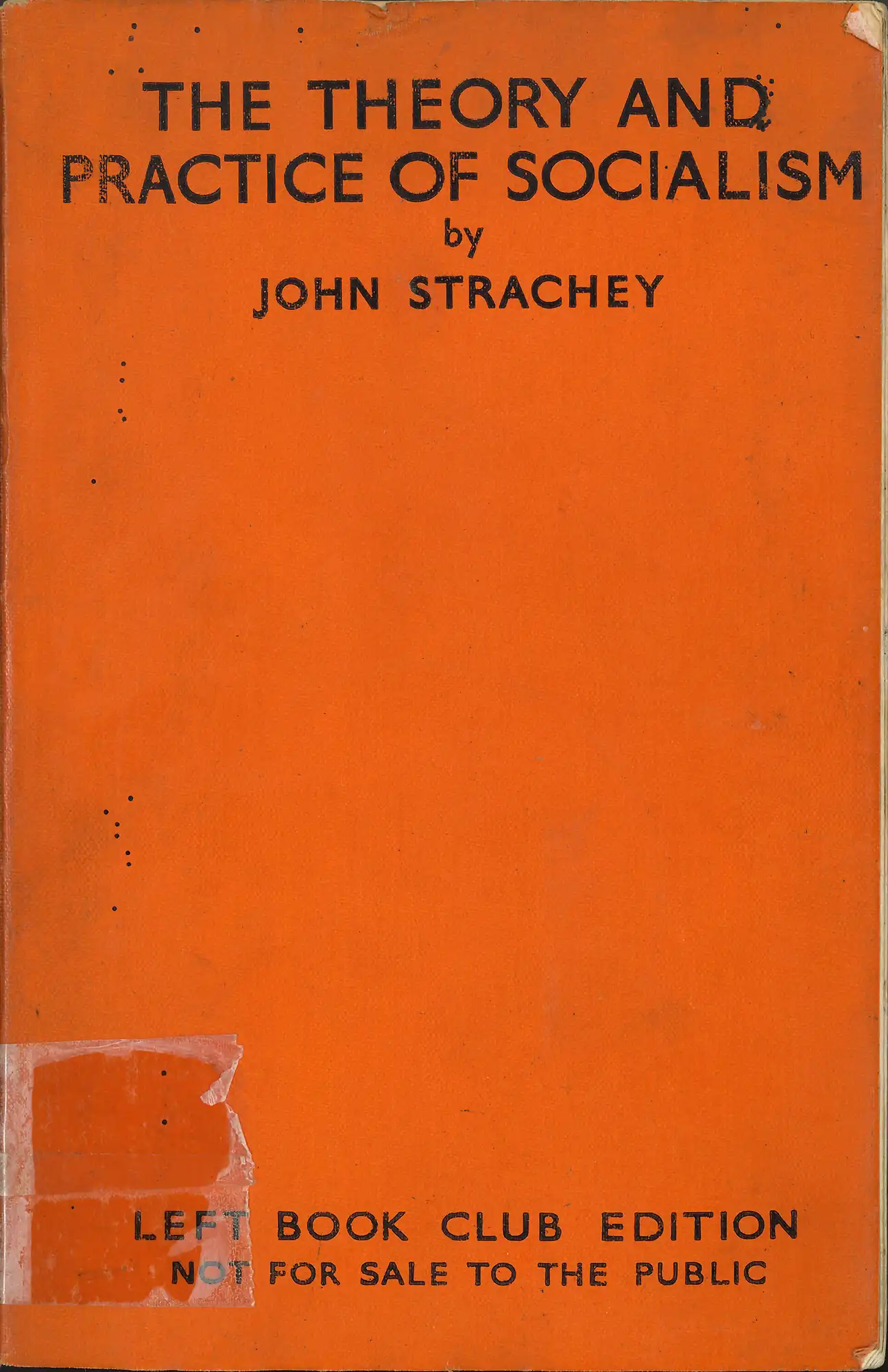
John Strachey, The theory and practice of socialism. (1936). LBC 335 STR
John Strachey’s The Theory and Practice of Socialism was the monthly choice for November 1936. Although there was criticism of the extreme use of the Soviet Union as a case study, this title, an exhaustive examination of the theory of socialism, became the ‘Bible’ for the LBC. According to John Lewis, the LBC secretary, it ‘completely filled the basic aim of the Club: to provide that disciplined study, rooted in fact and illuminated by theory’. Training schools were established throughout Great Britain to instruct others in the precepts of the book with Strachey often going on educational tours to discuss it and his other books. This copy was once owned by a Luke H. Jenkins, whose Ex libris bookplate motto is ‘with spirit and with fire’.
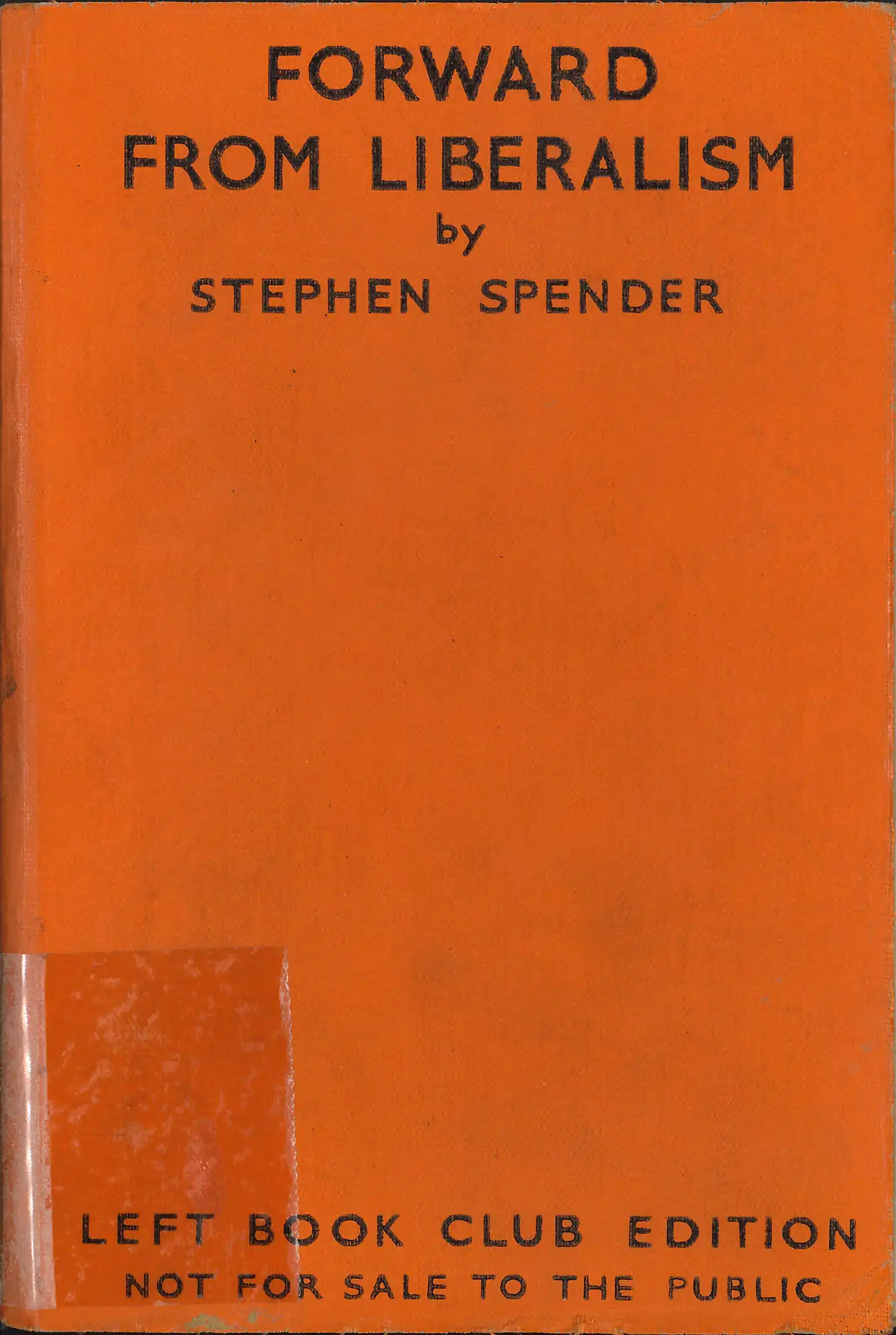
Stephen Spender, Forward from liberalism. (1937). LBC 320.532 SPE
Gollancz was astute enough to ask the young Stephen Spender (1909-1995) to ‘write a book on [his] approach to Communism’. The hidden agenda was that he hoped to use the poet to influence some of the younger generation. Spender agreed but opted for a more personal portrayal of ‘an attitude of mind’. Gollancz advanced Spender £300, which he spent on an ebony-topped desk and copper-bowl lamps, furnishings for his Hammersmith flat. While Spender presented socialism as the most effective path to social reform, there was criticism. The historian E. H. Carr, a Pro-Soviet supporter, cynically remarked that Spender was ‘a young poet and open-hearted’ who had ‘marched forward from liberalism into a mass of illusion’.
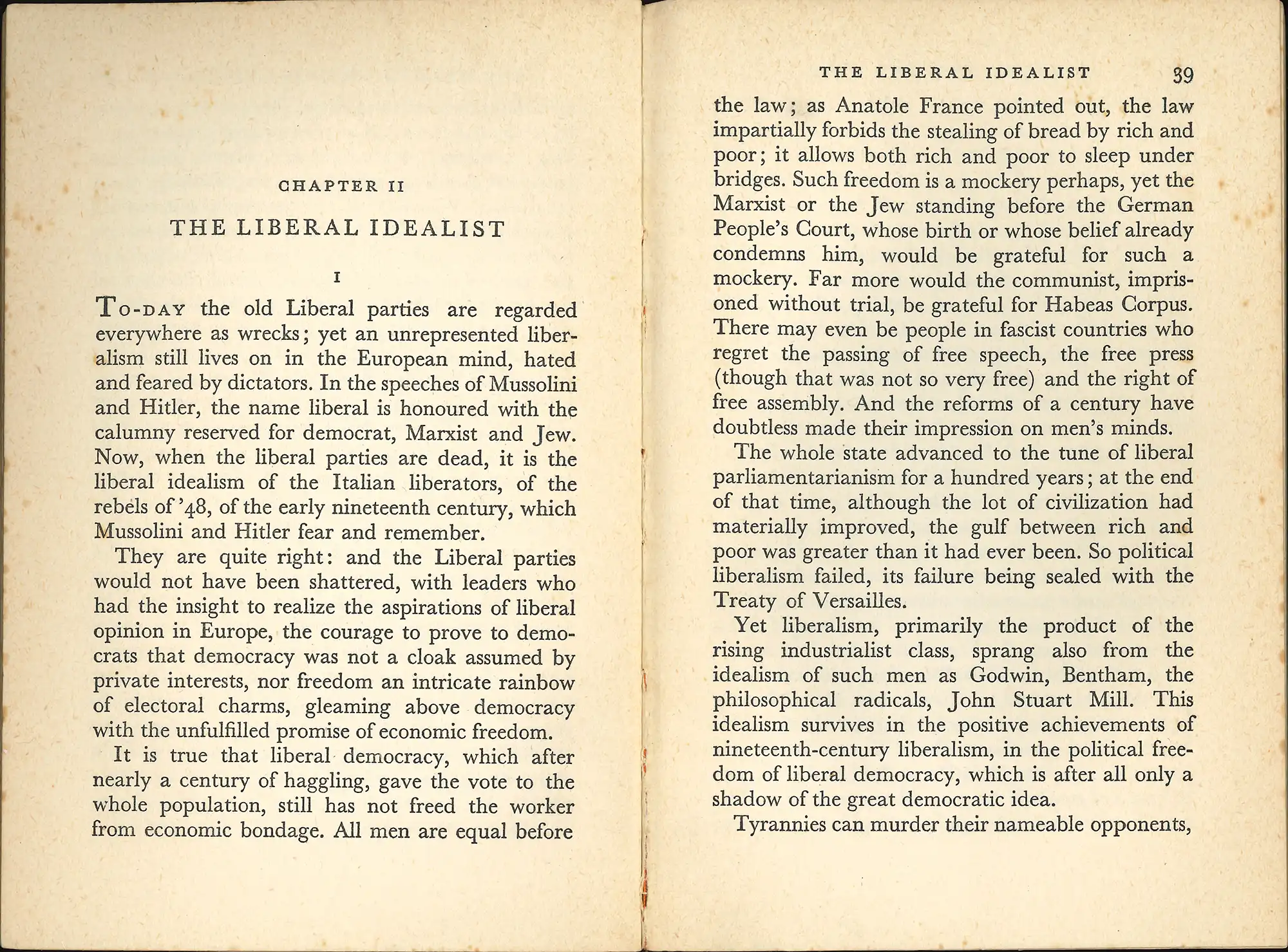
Stephen Spender, Forward from liberalism. (1937). LBC 320.532 SPE
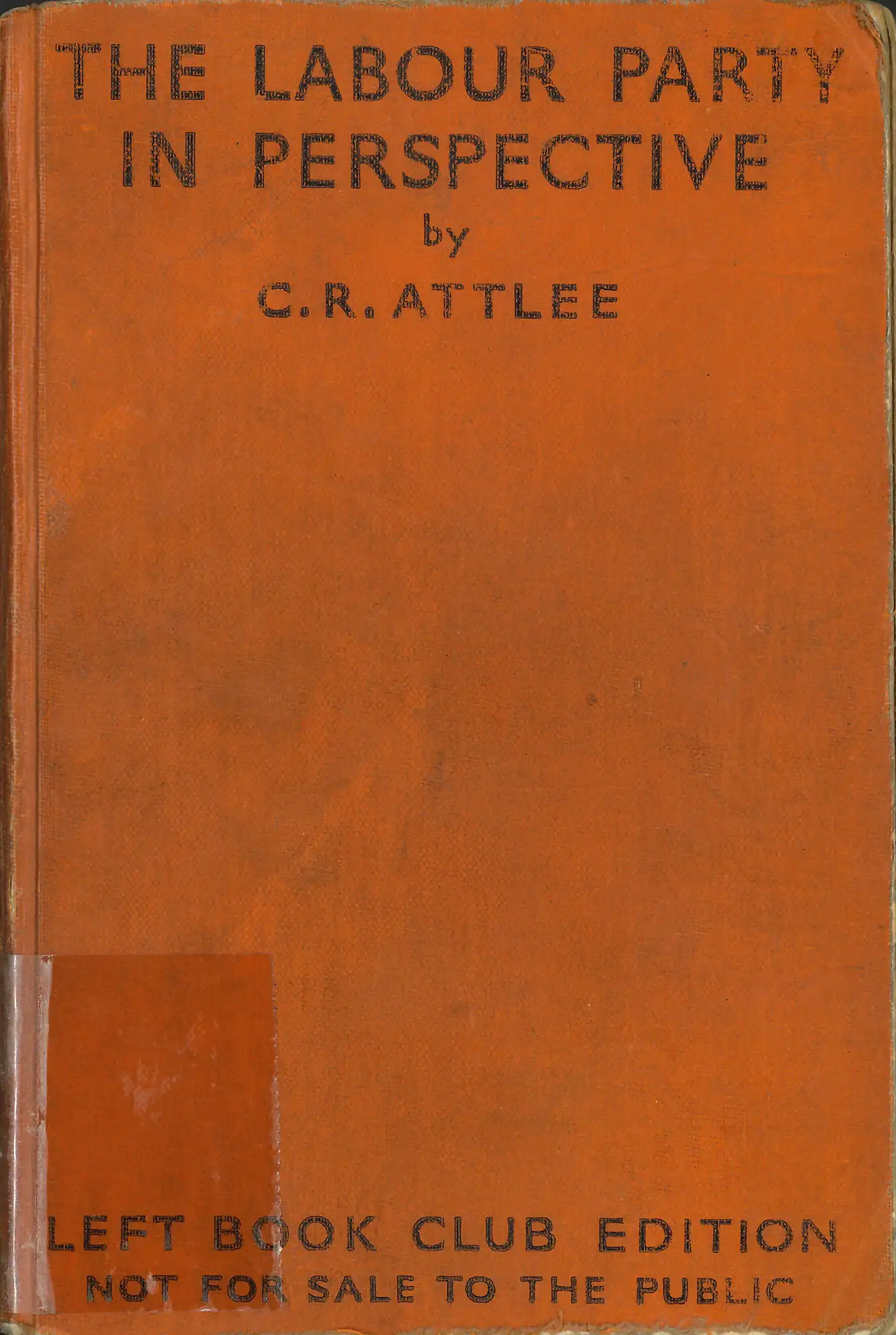
C. R. Attlee, The Labour party in perspective. (1937). LBC 329.942 ATT
Clement Attlee (1883–1967) was the Labour Party leader from 1935 to 1955. To forge greater ties with the Party, Gollancz asked Attlee to pen a title worthy of publishing. The ‘Book of the Month’ for August 1937 was the result: The Labour Party in Perspective, in which Attlee argued that there was no point in Labour compromising on its socialist principles in the belief that this would achieve electoral success. While the book sold well, it did cause some hostility, especially in the Labour Party itself. A rival book club – the Labour Book Service – was created and letters were sent to all divisional and local Labour parties threatening those who persisted in buying Left Book Club titles with expulsion. There was a storm of protest, based on the argument over the control of an individual’s reading. The rival ‘Club’ did not last long.
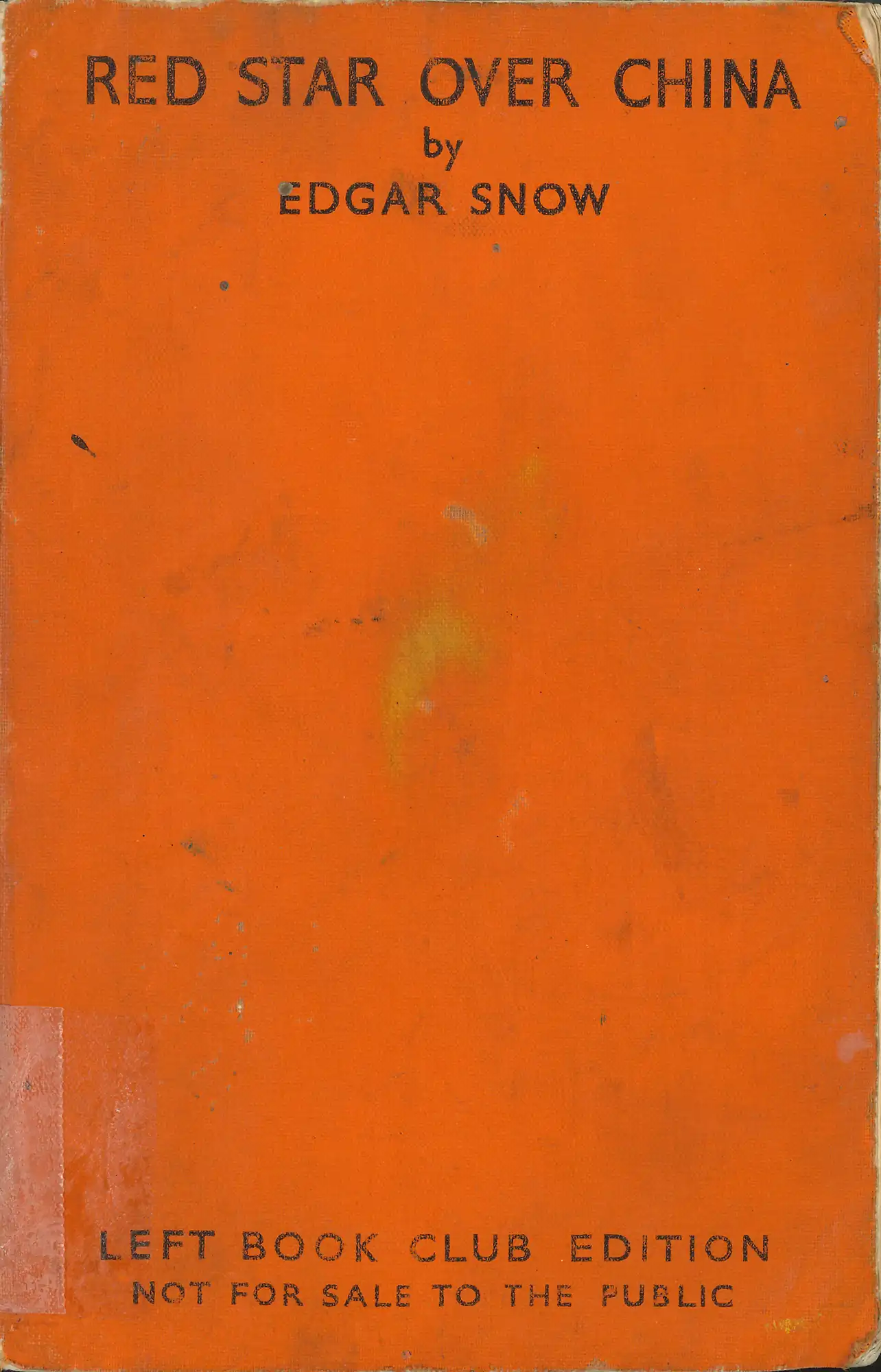
Snow, Red star over China. (1937). LBC 951.04 SNO
The American journalist Edgar Snow’s Red Star over China was the ‘Book of the Month’ for October 1937. It covered the famous year-long (1934-35) First Red Army march of 9000 kilometres from the southern province of Jiangxi to the northern area of Yan’an. Under Mao Zedong’s leadership there were some 65,000 marchers. Snow (1905-1972) interviewed Mao Zedong, which an unknown writer called in The Left News a ‘magnificent adventure story’. Gollancz himself called it ‘one of those rarely opportune books for which every publisher prays’. It made Snow famous.
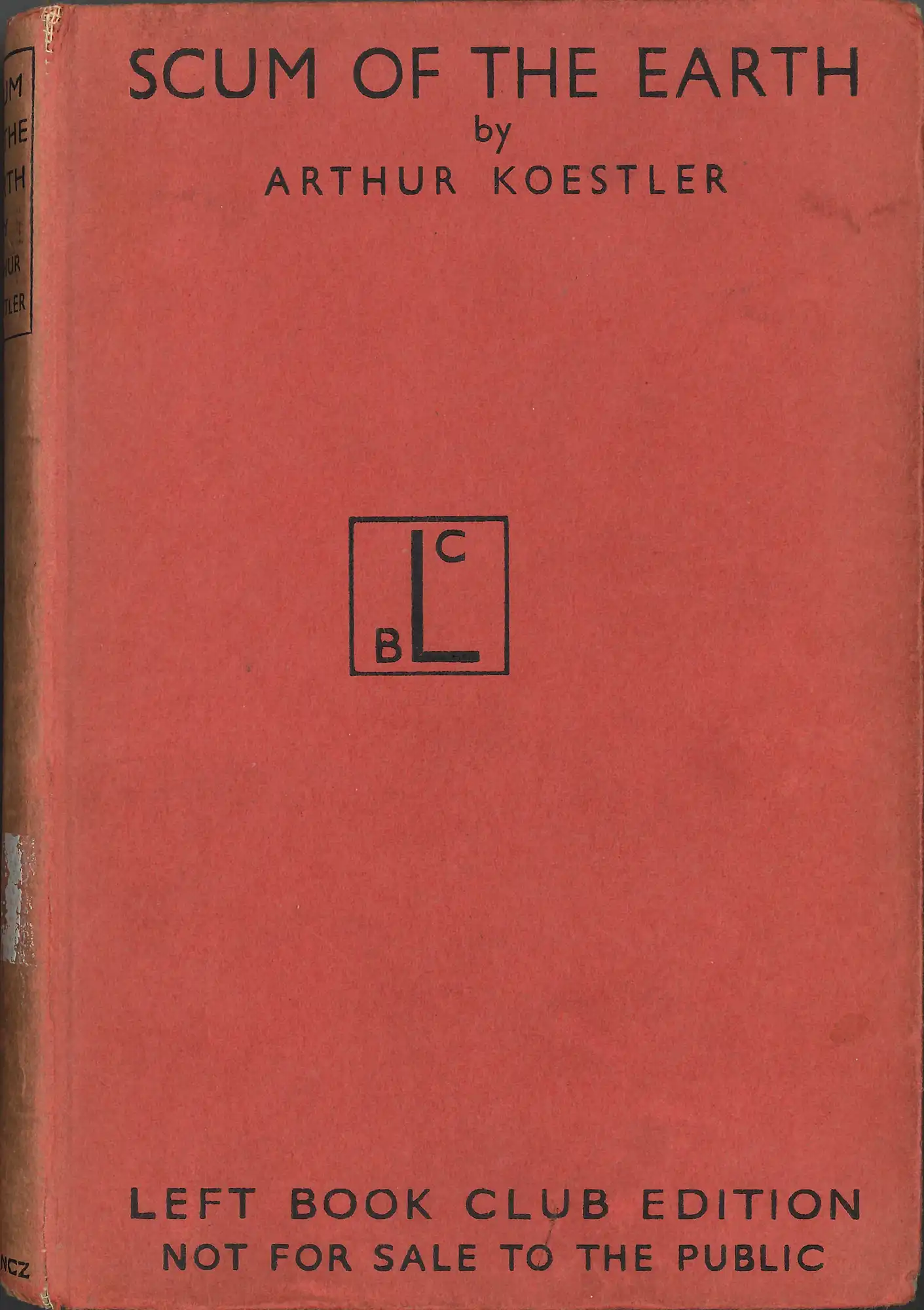
Arthur Koestler, Scum of the earth. (1941). LBC 940.53 KOE
In December 1937, Arthur Koestler’s Spanish Testament was published by the LBC. It made his name, solidified by the later appearance of novel Darkness at Noon (1940). Koestler (1905-1983) followed these titles up with Scum of the Earth, a personal memoir on his life in France, the chaos that pervaded the country during the war, his internment in a concentration camp, and his escape to England. Gollancz thought well enough of the book to publish it, even though Jonathan Cape had first imprint rights. A rare errata slip on the title-page of our second copy states that Koestler himself translated the text into English (a first for him) and not, as printed, ‘Translated by Daphne Hardy’ (1917-2003). Hardy was a British sculptor and intimate of Koestler’s; she appears as ‘G’ in Scum.
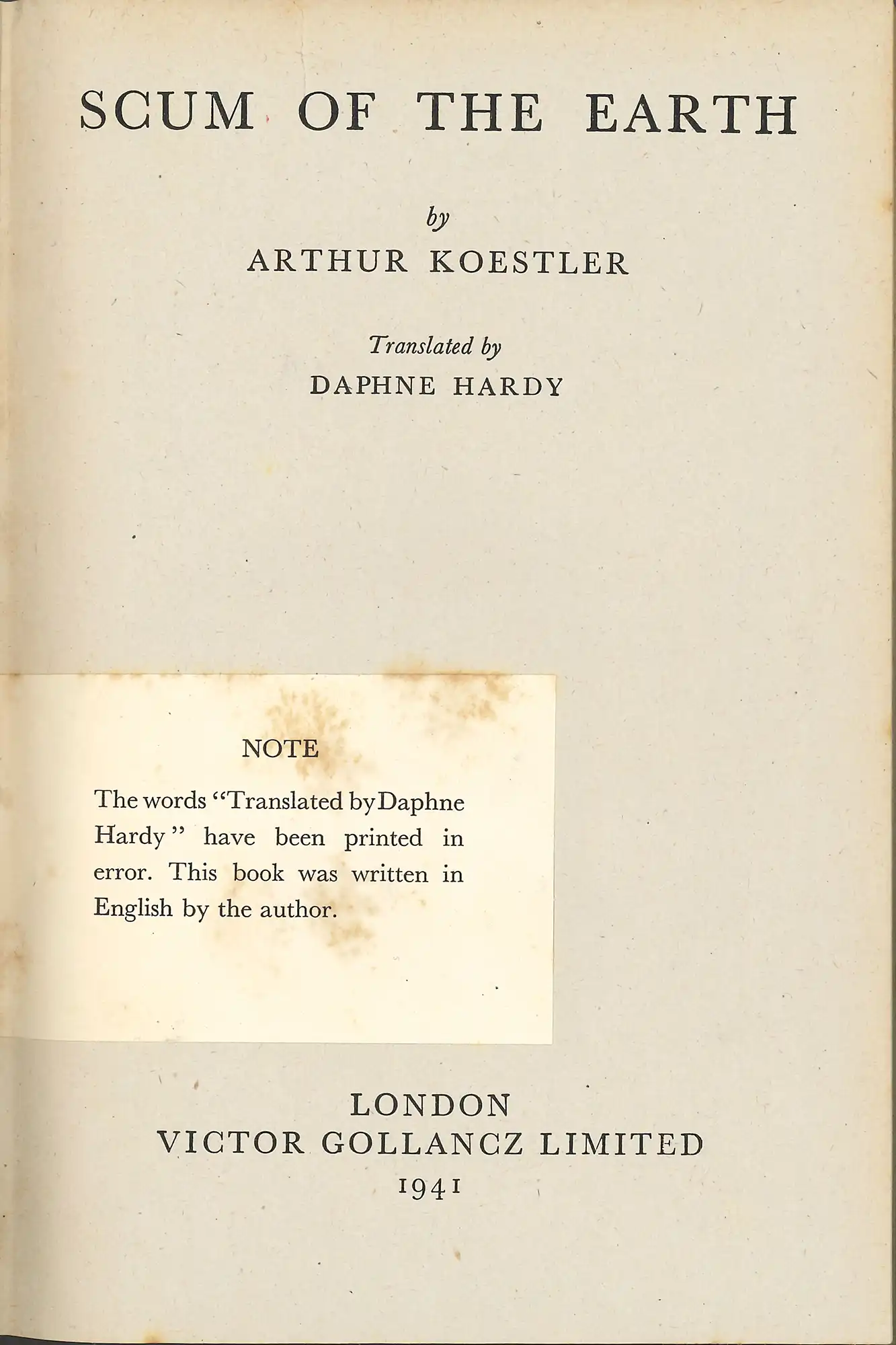
Arthur Koestler, Scum of the earth. (1941). LBC 940.53 KOE






